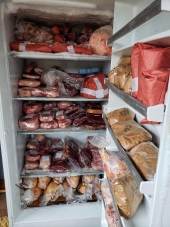posted 8 years ago
A source of food that I find readily available in the city is tree fruits and nuts. In this area, there are many trees in people's yards that go un-harvested. There are many trees growing in common areas like parks, roadways, or canals that go un-harvested. Paying attention to those sources of food, and harvesting them can make a significant contribution to feeding a family. Refine the technique even more, by making agreements with the landowners to take care of the trees in exchange for the food they produce. Offer to clean up windfalls, or give them a couple bottles of juice made from the fruit of their tree. Don't overlook other forageables like blackberries, asparagus, mints, cattail pollen, rock doves, etc.







